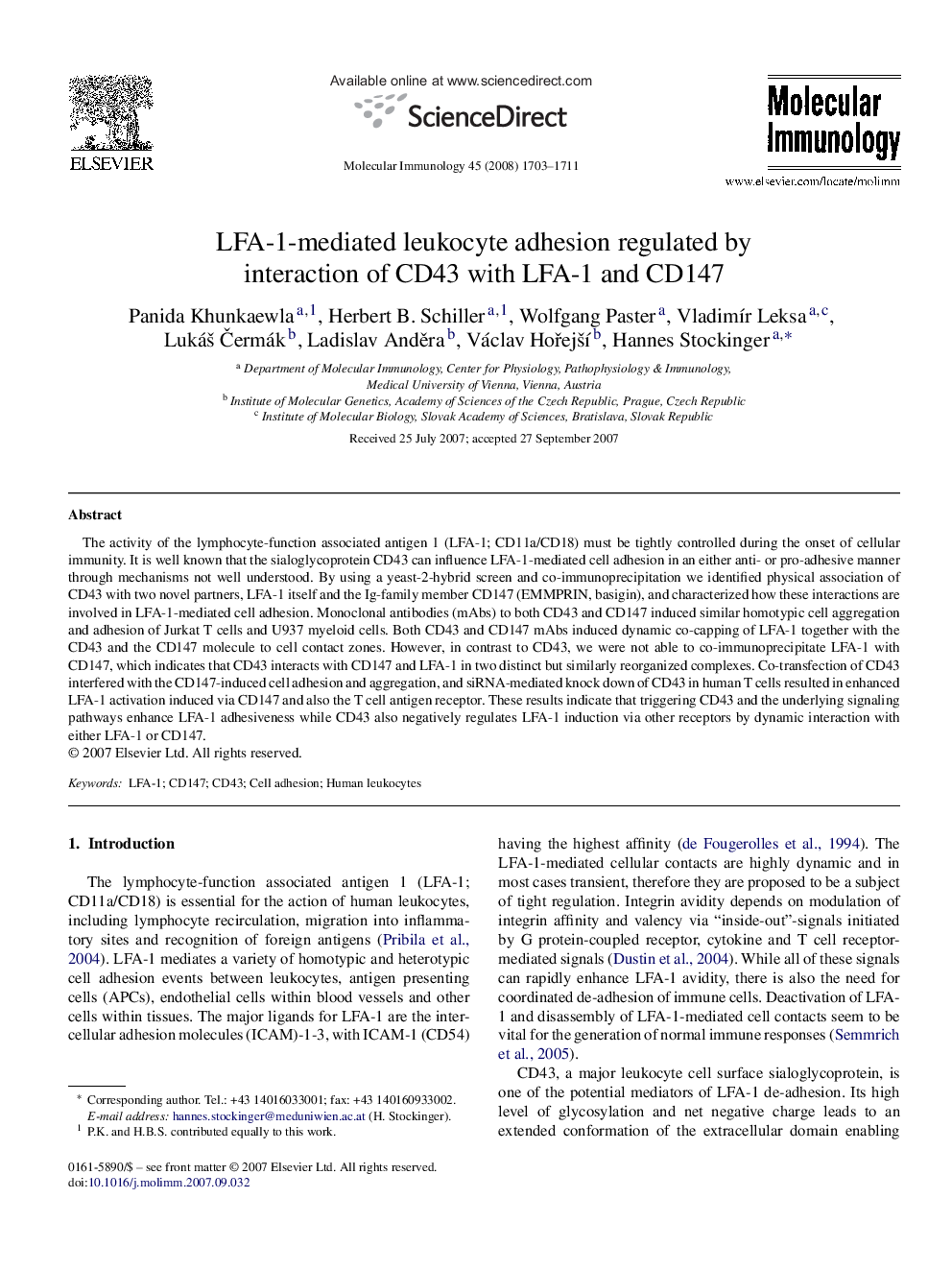| Article ID | Journal | Published Year | Pages | File Type |
|---|---|---|---|---|
| 2832109 | Molecular Immunology | 2008 | 9 Pages |
The activity of the lymphocyte-function associated antigen 1 (LFA-1; CD11a/CD18) must be tightly controlled during the onset of cellular immunity. It is well known that the sialoglycoprotein CD43 can influence LFA-1-mediated cell adhesion in an either anti- or pro-adhesive manner through mechanisms not well understood. By using a yeast-2-hybrid screen and co-immunoprecipitation we identified physical association of CD43 with two novel partners, LFA-1 itself and the Ig-family member CD147 (EMMPRIN, basigin), and characterized how these interactions are involved in LFA-1-mediated cell adhesion. Monoclonal antibodies (mAbs) to both CD43 and CD147 induced similar homotypic cell aggregation and adhesion of Jurkat T cells and U937 myeloid cells. Both CD43 and CD147 mAbs induced dynamic co-capping of LFA-1 together with the CD43 and the CD147 molecule to cell contact zones. However, in contrast to CD43, we were not able to co-immunoprecipitate LFA-1 with CD147, which indicates that CD43 interacts with CD147 and LFA-1 in two distinct but similarly reorganized complexes. Co-transfection of CD43 interfered with the CD147-induced cell adhesion and aggregation, and siRNA-mediated knock down of CD43 in human T cells resulted in enhanced LFA-1 activation induced via CD147 and also the T cell antigen receptor. These results indicate that triggering CD43 and the underlying signaling pathways enhance LFA-1 adhesiveness while CD43 also negatively regulates LFA-1 induction via other receptors by dynamic interaction with either LFA-1 or CD147.
